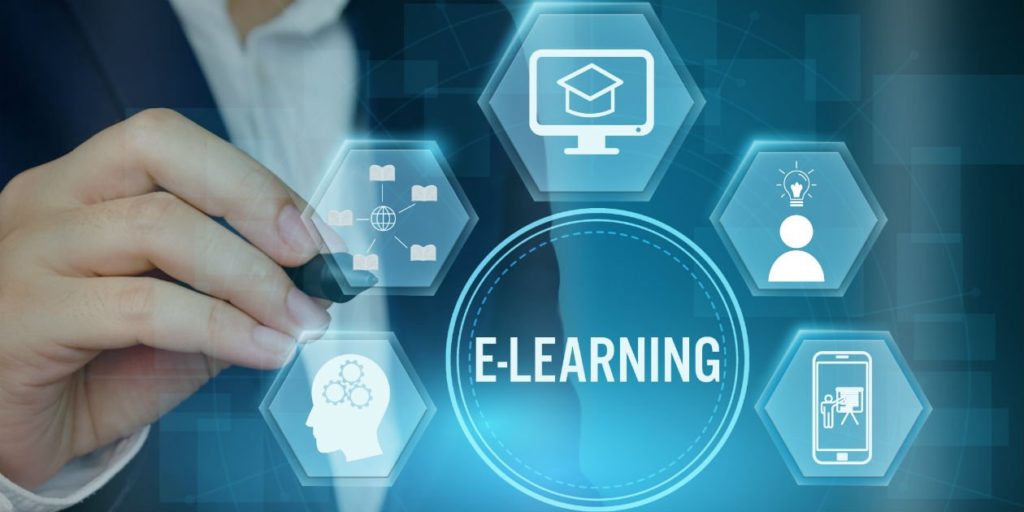What is a learning management system LMS? the way to choose the foremost suitable LMS for an enterprise
What is the aim of the training management system
At the only level, a learning management system can help organize teams to gather , publish, and follow up
Learning Activities. It Should Include The Following:
Onboarding of latest employees: New employees will enjoy LMS to assist them quickly find the situation of every unit, work instructions, required flowcharts and work-related procedures.
Development And Retention:
LMS can make sure that employees have the proper skills, product upgrades and updated knowledge, and understand the company’s development trends.
Legal Compliance Training:
LMS will make sure that employees receive compliance training, like regular certification and necessary program learning. This helps reduce risks and avoid any issues associated with compliance.
However, there’s a standard misunderstanding that we’d like to clarify before further research.
LMS and What is LMS (Learning Content Management System)
LMS and LCMS are often (incorrectly) used interchangeably. Both can provide digital content and are compatible with SCORM.
The Difference Between LMS And LCMS
LMS may be a platform for publishing, delivering and tracking the progress in fact completion. it’s just a delegated cargo area for published content. Content updates are usually managed outside the system. the last word goal is to live the progress of the course completion and supply feedback. the main target of its main service is all users (learners), instead of authors who often got to produce, maintain, and optimize content.
LCMS may be a platform that supports the whole training content cycle: authorizing authentication tools, publishing, delivery and measurement. It provides a collaboration center where content are often synchronized and reused in multiple formats.
These formats are often published and utilized in the LMS. At an equivalent time, it provides a centralized content asset repository, and supports and manages one release. the main target of LCMS is on authors who often got to produce, maintain, and optimize content.
Remember, this is often not just a choice between the 2 , or the higher question. the 2 have different purposes. But the healthy integration of the 2 platforms can provide an entire solution for any HR organization.
Supplement: the event of LCMS has weakened in recent years. Nowadays, many convenient and cheap Authoring tools are fast evolving in order that LCMS cannot continue , and it’s difficult to satisfy the event trend of enterprise evolution. – George Yang added.
Advantages Of Learning Management Software
Corporate operations rely more on collaboration than ever before, then does corporate training and development. Having a correct learning activity management system can help motivate employees, increase productivity and improve learning outcomes. Therefore, when seeking to integrate LMS into your current human resources system or system, the subsequent important reasons are worth considering!
Data-Integrity
Data redundancy will waste time and cause inefficient training development. The smart LMS system is provided with data integrity tools to make sure the consistency and accuracy of knowledge input.
Digital Training Development-Personalization
Of course, you would like to be ready to obtain a complicated analysis of every employee’s training records, including past performance, job responsibilities, and online training development progress. Better visibility means you’ll recommend training courses supported your employees’ necessary skills, job tasks, and career aspirations.
you’ll fully understand the worker ‘s work history and therefore the overall situation of the employee. This helps you understand the simplest performers, then they will make more progress. At an equivalent time, you’ll identify where there are struggling employees and what quite help the system can provide.
Effectively analyze big data-optimize training development
Integrating LMS together with your current HR system can assist you analyze data faster and more efficiently. Then you’ll have a deeper understanding of your talent pool and therefore the training and development models they have .
Improve the return on investment in training development
“Reduce time” and “the ability to quickly collect actionable data” can both bring profitable investments. you want to only choose high-impact training programs and discard the insignificant ones. you want to do your homework carefully to understand what’s best for your business while avoiding the “high learning curve” or “confusing interface”. Next, allow us to consider the training phase and the way the LMS can help within the process.
LMS application process
David Kolb’s learning cycle reveals the four main stages of learning.
These stages are summarized as:
Preview : Reveal the present training background and help learners connect the knowledge they need with the new knowledge they seek.
Learning : Define the content of the course, including attitudes, skills and knowledge.
Application : The learner applies the acquired knowledge and skills, or changes in attitudes within the workplace.
Adaptation : Help learners change their working environment consistent with their learning.
Supplement: Please note that this cycle has entered the training phase. The goal setting before learning, the goal communication representative has been completed. HR Sensei added.
But the way to apply the above stages within the content and context of the LMS? allow us to review one by one:
Preview stage
Use pre-assessment of what the learner already knows. for instance , you’ll design a group of test papers with 10-20 questions. If employees pass this test, they will continue the particular training. Otherwise, before introducing new training, consider more military training content.

Learning phase
Introduce learners to the core learning process that strengthens the training objectives, the goals and standards of every stage. Blended learning strategies are often wont to combine classroom courses with digital learning courses to enhance proficiency.
Application phase
Help learners practice to consolidate their knowledge supported newly acquired knowledge and skills. Real-world simulations are best suited for this stage because they’re replicas of the important world and employees can experience the important working environment without risk of failure.

